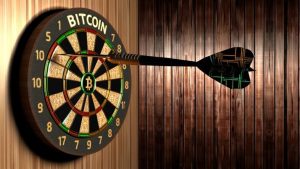If last week’s surprise launch of Ethereum NFT project Loot (for Adventurers) appeared to suggest a lack of imagination in the burgeoning crypto collectibles space, then you probably weren’t alone in thinking that. After all, it’s just a list of text on a plain black background. What’s the point?
However, the project has quickly proved naysayers wrong in the way that it’s inspiring the imagination of others. Yes, it’s just a list of items—a randomized bag of weapons and equipment from a fictional role-playing game loadout, for example.
But now a community is starting to build upon that premise with various initiatives, and the NFT lists themselves are surging in value. Even Ethereum co-founder Vitalik Buterin is a fan.
Loot was launched on August 27 by Dom Hofmann, widely known as the co-creator of shuttered video sharing app Vine. He’s also someone who is keen to push the boundaries of what NFTs are for.
Last month, Hofmann announced Supdrive, an upcoming video game platform in which the Ethereum-based NFTs are the actual, playable games. He’s also a co-founder of Nouns, a project that spawns one new NFT per day and grants access to a decentralized autonomous organization (DAO)—a group that controls the project’s future and growing stash of ETH.
There was no minting cost for each Loot NFT—just the Ethereum network’s gas fee for the transaction. A total of 8,000 of the NFTs were available, and were all claimed within the span of a few hours. Thousands of people now had a randomized list of gear, ranging from the “Holy Greaves of Giants” to the “‘Grim Shout’ Grave Wand of Skill” and the “Falchion of Reflection.”
LOOT
– randomized adventurer gear
– no images or stats. intentionally omitted for others to interpret
– no fee, just gas
– 8000 bags totalopensea: https://t.co/qSnRJ1FD0n
etherscan: https://t.co/bF9p0RSHX2available via contract only. not audited. mint at your own risk pic.twitter.com/uLukzFayUK
— dom (@dhof) August 27, 2021
An NFT acts like a deed of ownership to a digital item, such as images and video files. In this case, it’s an image depicting a list of text. That’s all there is to it—and that’s intentional.
“Loot is unique—the first project of its kind. With no company, art, team, or attributes, Loot makes it impossible to gate-keep any creative decisions,” the website reads. “Loot is the unfiltered, uncensorable building block for stories, experiences, games, and more, in the hands of the community, at no cost. Loot pursues complete decentralization from day one.”
In other words, it’s a prompt. And the community is responding by building: they’re creating rarity guides and other tools, developing generative artwork programs, and forming guilds. There are derivative projects in the works focused on companion animals, supplies, lore, music, and quite a bit more. Now there’s a forum to help everyone better coordinate projects as Loot perhaps takes shape as a proper, community-driven game experience.
Yesterday, SyndicateDAO co-founder Will Papper launched Adventure Gold (AGLD) and enabled Loot owners to claim 10,000 tokens for free (paying only the Ethereum gas fee). According to CoinGecko, one AGLD token is now trading for $6.68, putting the total airdrop value north of $66,000 for each Loot NFT owned. According to Papper’s tweets, he wanted to “set a standard for projects building on Loot in the future,” providing a currency for the burgeoning, decentralized game universe.
This is what I have been SUPER EXCITED about…
It’s @dhof and his creations: @blitmap @sugarthegame @supdrive, and most importantly @lootproject
Loot is something different. It’s something that has never been done before ever.
It’s a paradigm shift in NFT space.
Thread
pic.twitter.com/vbaUF4uGNE
— tandavas.eth
(@tandavas) August 31, 2021
Meanwhile, Hofmann has launched “Synthetic Loot.” Essentially, it’s a smart contract—that is, a chunk of code that performs set instructions—that allows anyone with an Ethereum wallet to participate in future Loot-related endeavors without owning one of the actual NFTs. In other words, it ensures that whatever projects ultimately spawn out of the Loot community aren’t strictly limited to the 8,000 or fewer holders of the original NFTs.
“Creators building on top of Loot can choose to recognize Synthetic Loot as a way to allow a wider range of adventurers to participate in the ecosystem, while still being able to easily differentiate between ‘original’ Loot and Synthetic Loot,” Hofmann wrote. Naturally, someone else has already built an interface on top of the Synthetic Loot code.
Vitalik Buterin thinks Loot “has it right.” In a wide-ranging Twitter thread on Wednesday, Buterin praised Loot’s approach in fully opening up its direction to the community and accepting effectively all subsequent creations as legitimate.
I think the @lootproject philosophy has it right: pretty much anything that anyone creates “exists”, what matters is to what extent other people build upon it.
— vitalik.eth (@VitalikButerin) September 2, 2021
“I think the Loot philosophy has it right: pretty much anything that anyone creates ‘exists.’ What matters is to what extent other people build upon it,” Buterin wrote. “There is absolute truth in that once an object exists, what you can do with it is limited by the rules coded into that object, but the question of which objects matter is decided by much fuzzier forces.”
On top of the AGLD airdrop, the Loot NFTs themselves have surged in value since last week’s drop. The cheapest available Loot NFT on the OpenSea marketplace is now priced about 15 ETH ($59,600), and the site reports more than $159 million worth of total trading volume to date. A single Loot NFT sold for 250 ETH ($954,000) today. It previously sold for 0.08 ETH ($305) last week.
What Loot all amounts to remains to be seen, but there’s clearly a lot of traction, interest, and money around the project in a matter of days. And it all started with lists of fictional gear, aided by ample decentralized imagination.















